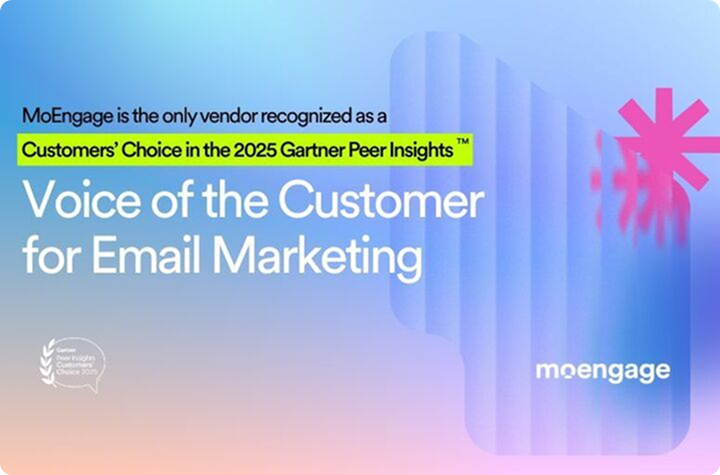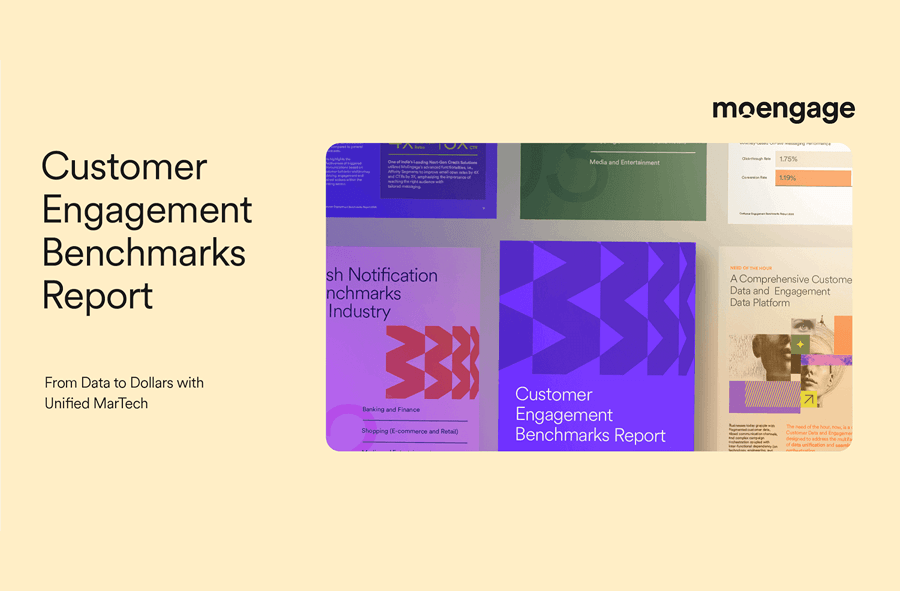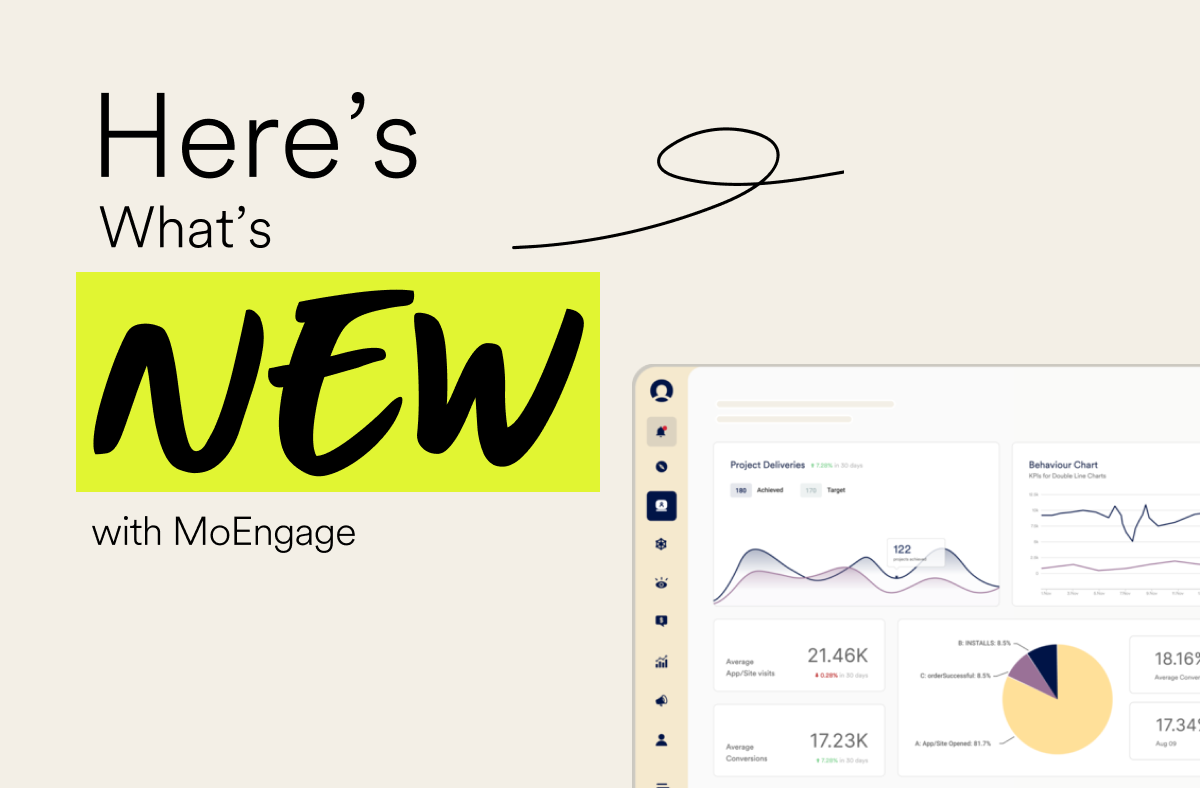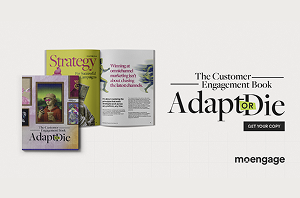How to Create a B2C Martech Strategy: The Ultimate Guide

Reading Time: 15 minutes
Gone are the days when customers accepted the bare minimum from brands. Today, customers expect a lot more in terms of engagement and experience. To keep up with these evolving customer demands, marketing can no longer thrive without technology. This is where marketing technology (aka martech) comes in.
As AI and other technologies evolve, martech stands at a pivotal moment. The martech landscape is estimated to have grown at an astounding 41.8% CAGR from 2011 to 2024.
According to the 2025 State of Your Stack survey, 62% of marketing professionals reported using more martech tools than they did two years ago.
So, let’s break this down in more detail.
What is Martech?
Martech is a collection of all the software applications and tools used to execute, manage, analyze, and optimize online and offline marketing activities. These may include customer relationship management tools, marketing automation platforms, content management systems, analytics tools, gen AI, and more.
Today, it is difficult to imagine marketing without these tools. As more brands adopt a martech strategy to deliver elevated customer experiences, Forrester predicts that martech spending will reach $215 billion in 2027.
Why is Martech important?
Mark Fiske, Operating Partner for Marketing & Digital Transformation at H.I.G. Capital, explained the benefits of building a modern martech stack:
Time and again, we have seen with new technologies that as productivity grows, elasticity comes with it. As we get better at leveraging technology, marketers might want more and more of this, and the nature of our jobs will change as we monitor and manage it. But the overall output and value will be greater as a result.
MoEngage’s Martech Readiness Report found that 96.8% of retail brands agree that consumer behavior, preferences, likes, and expectations are evolving rapidly. Given this backdrop, brands need to be one step ahead of the customer, anticipating their needs, personalizing interactions, and offering seamless customer journeys from start to finish.
Martech is important because, whether it is analyzing customer preferences, dynamically engaging with customized content, or executing campaigns at scale, these tools provide marketers with a holistic view of the customer journey and allow them to reach, engage, and analyze effectively.
Typical Martech challenges when it comes to setting up your stack
Given the huge significance of martech, it has now become integral to brand strategies. If you’re new to martech, the first thing you will need to do is set up your B2C martech stack.
However, before you dive in, it would be wise to be aware of some roadblocks you may face. For instance, MoEngage helped the AI fintech startup Beem overcome challenges, such as transitioning from internal backend systems to unified communications solutions across various channels.
While most of the hindrances may be specific to your business, here are some commonly faced martech challenges:
- Data challenges: When setting up your martech stack, you might face data quality issues that can hinder accurate analytics and personalization. Additionally, at the outset, data may be siloed and fragmented, which prevents a comprehensive view of customer journeys and leads to inconsistencies.
- Complexities in integration: One of the greatest martech challenges is technical difficulties arising from complex integration processes of martech tools. For instance, different martech platforms may use varied data formats and standards, resulting in incompatibility and data exchange problems.
- Budget constraints: Entering the martech world requires an investment in realigning your strategy and buying martech tools. This may not be suitable for your brand’s budget; therefore, a cost-benefit analysis can be beneficial before you take the leap or decide on your stack.
- Operational and people challenges: When your brand is just starting to explore martech, your teams might face a skills gap. This can cause delays and inefficient use of martech platforms. Additionally, updating legacy processes and tools can be a significant challenge for your organization.
- Data privacy and security: With advanced technologies like AI embedded in your B2C martech solutions, ensuring data privacy and ethical AI practices is crucial. If not addressed, this can lead to conflicts with prevailing regional data regulations, data breaches, and other issues, ultimately costing the brand customer trust and loyalty.
Despite these challenges, building up your martech stack is detrimental to your brand’s long-term success. As Martech expert Scott Brinker explained at The 2025 Customer Engagement Summit:
There’s no finish line in martech. Every stack is in motion. The winners are the companies that see it as an operating system, not a project.
B2C Martech Architecture Diagram: What Your Ecosystem Should Look Like
As seen above, the martech landscape is evolving at an unprecedented pace. This means that what was relevant five years ago may no longer support your needs today. So, what would your ecosystem ideally look like?
Well, a modern B2C martech strategy is typically well-spread and multipronged to cover all bases. To set up your own martech ecosystem, you will need to design your martech architecture as a B2C brand.
While architecture may sound technical and complex, what it really means is laying out the strategic design and integration of modern marketing technology tools with your existing systems. This architecture helps ensure a cohesive data flow across components.
Here’s a martech ecosystem diagram that shows the components of a typical martech architecture for a B2C brand.

These components are:
- Message Orchestration: Message orchestration tools pass on messages between various software and components. These tools bring real-time data together, enabling brands to create unified and personalized omnichannel customer journeys. Tools like MoEngage, Verloop, and LimeChat can help with this.
- Sales & Workflow Automation: Sales and workflow automation can help you streamline and automate repetitive tasks. This category generally comprises tools that help your ideas go live quickly and assist with functions such as lead management.
- Content: When it comes to marketing, content remains the king. There are various tools available to help you create, manage, and optimize content. For the content stack, you would need a robust content management system, generative AI tools, and SEO tools.
- Advertising and OTT: This component comprises platforms that help publish your content or ads for mobile, desktop, and other devices. They are particularly useful for programmatic ad buying, enhancing the efficiency of digital ads. AI-assisted ad tools can help with A/B testing and optimize your ad budgets, allowing you to get more with less.
- Ecommerce: Ecommerce tools include martech solutions like Shopify, which make it easy for B2C brands to set up and manage online stores end-to-end. Tools like these help manage inventory, process payments, and sell across various channels with an integrated approach.
- Customer Data Platforms: CDPs help gather customer data from multiple channels and touchpoints to get a holistic view of the customer. Based on this data, marketers can accurately segment customers and even target these segments with tailored efforts. Martech use cases for CDPs include data collection, data cleansing, analytics, and segmentation for deeper personalization.
- Analytics and Install Attributions: These tools allow for real-time reporting by tracking and analyzing customer behavior for acquisition, growth, and customer retention. Using these martech solutions, brands can assess the effectiveness of various channels and campaigns and optimize accordingly.
- SMS, Email, and WhatsApp Providers: You will need specific martech tools for sending omnichannel communications, such as social media management platforms that support SMS, email, and WhatsApp. Most of these tools are now powered by AI and can be integrated with your CMS for automated messaging.
- Data Warehouse and Cloud Storage Solutions: To power up and complete your B2C martech stack, you would need efficient cloud storage for seamless sharing across your teams from a single, centralized source. Modern data warehouses and cloud storage solutions are powered by AI, enabling the seamless execution of a robust, data-driven martech strategy.
Martech Roadmap: How to Build a Successful B2C Tech Stack
Whether you’re just setting foot into martech or already have an existing martech stack, your martech ecosystem may often appear like a maze–not knowing what to change, improve, or retain. With a proper martech roadmap, your path to building an optimal B2C martech stack can be pretty straightforward.
Here’s what Scott has to say about this in The Customer Engagement Book:
I always recommend that you start by mapping your customer journey. We know the customer journey, in reality, is never as clean as we make it look like…but mapping it out, even if it’s a bit of a decision tree, is still really useful to understand.
Here are some easy-to-follow steps that may help:
1. Define/redefine your brand’s goals and customer needs
When considering upgrading or building your B2C martech stack, it is important to answer questions like: What are my brand’s goals? Are they aligned with my customer’s needs?
Defining goals helps create a comprehensive image of where you want to be and which martech solutions you need to achieve that goal. For instance, if you wish to increase awareness about your brand, you may want to invest in martech capabilities, such as an efficient content management system, social media tools, and SEO tools, and build your martech stack accordingly.
Here, a content management system enables the creation and publication of content without requiring coding. Social media tools can help distribute this content across your brand’s social handles, and SEO tools can optimize your content for better visibility—together, they ensure that your content reaches a wider audience.
2. Determine your budget
While there is no set formula for determining a martech budget, focus on the “must-haves” in your martech stack rather than the “nice-to-haves.” Think in terms of martech ROI, which must be considered from the customers’ perspective—faster onboarding, lower churn, and higher loyalty—rather than tech specs.
Getting stakeholders to approve your martech budget is the next step. It shouldn’t be too hard if you follow a specific procedure. When SoundCloud wanted to modernize its martech stack under a tight deadline, Hope Barrett, Senior Director of Product Management at SoundCloud, rallied stakeholders across marketing, data, product, and engineering teams. During her fireside chat at The Customer Engagement Summit, she recounted her story:
We had small intimate sessions with them to figure out, ‘What are your requirements?’ My goal was to make sure that everyone had a stake and a share in the conversation of doing this.
After getting stakeholder buy-in, she prepared and sent out a structured RFP with over 200 questions to vendors. SoundCloud ultimately selected MoEngage, but the moral of the story is clear: stakeholder buy-in and data-driven decision-making are just as important as the martech stack itself.
Moreover, you may want to select comprehensive martech tools that come with multiple components rather than individual tools. For instance, there may be many gaps in data visibility across the many touchpoints available today. In this case, you may want to choose aggregate software that helps with seamless data access rather than multiple tools that work in siloes.
However, there isn’t a one-size-fits-all approach, so choose based on what works best for you—strategically and financially.
3. Design the tech stack aligned with your future needs
Many marketers build their tech stack with their current needs in mind. However, it is always wise to consider your martech plans going forward and incorporate some flexibility for future needs.
Think of your martech stack as something that evolves in tandem with your brand’s growth and needs. It may help to ask questions like, “How do I bring new things into it, and how do I remove things from it? If I actually want to remove this thing and replace it with something else, how easy or difficult will that be, and why? Where are those dependencies?” This can help you future-proof your existing martech stack.
In our interview with Tiffany Fitzgerald, Director, Strategy, Media and Technology at Movable Ink, she pressed the need for having the following tools in a martech stack:
- A deep learning tool to pinpoint anomalies and trends in data
- A strong digital analytics platform to track attribution
- A tool to collect real-time feedback from customers
- A personalization tool that can create one-to-one experiences across all campaigns

4. Implement the B2C martech stack
Once you have your brand’s martech architecture diagram, you can go ahead and subscribe to or buy these tools.
But before implementing your B2C martech stack, you need some foundational elements to ensure your martech strategy leads to campaign success.
According to Tiffany, marketers must have a strong data strategy in place that directly connects with organizational KPIs and metrics. Of course, nothing beats building strong relationships across your brand and marketing teams. Only then can you align any creative and brand approaches, which is key to gaining and retaining customer trust.
Implementation requires careful integration of your martech tools with your existing data and systems. If you face any problems in the process, Tiffany believes there’s no harm in asking your vendor partners for help. So, when in doubt, seek customer support from providers to ensure a seamless onboarding process.
5. Train your team in using the martech stack
Your chosen marketing stack will impact other departments, potentially leading to confusion and even reluctance to adopt new processes.
When addressing these potential challenges, Scott Brinker notes:
When you start to look at building these systematic ways of doing training and enablement into the marketing organization, are you empowering people to have the money to go and try new tools?
For instance, the sales department may struggle to adjust its processes to a new lead management system that marketing has implemented. Therefore, it would make sense to anticipate such martech challenges and train all the stakeholders involved in the transformation. This can help them use these tools to get closer to achieving their KPIs.
6. Monitor the performance of your martech ecosystem
Tiffany explains how imperative it is for marketers to build strong analysis and reporting skills today. It’s not enough to show the data. You need to be able to interpret it and tell a story with it.
Consider using free trials and shorter subscriptions to see if the martech tools are working for you initially. Assess the performance of your B2C martech stack semi-annually or annually. Check if any tools are outdated and ensure they remain aligned with your current goals.
7. Run regular martech audits
Running martech audits can help keep you on top of the game. These audits involve assessing your integrations and data flow, security and compliance, and stakeholder feedback, ultimately optimizing your stack to reduce redundancies and costs.
Common Martech Applications and Use Cases (By Industry)
Take any industry or department, martech use cases are prevalent nearly everywhere. Here are some popular martech applications from diverse industries you must know:
1. Personalized customer experiences in the Retail Industry
One of the most common use cases for martech is in the retail industry. Martech capabilities can equip retail brands with real-time data and analytics, thanks to the help of CDPs. These martech analytics can help tailor customer experiences based on their behavior and preferences.
Multiple teams can leverage these insights using martech tools, such as cloud storage, to automate personalized communication and manage leads at scale. This customized messaging can enable them to send relevant offers and information to customers, who may, in turn, progress further along the purchase journey.
2. Content Management for Ecommerce
For Ecommerce brands, content is of prime importance, as it is one of the most crucial ways to reach customers and prospects. Whether it is a quick nudge to finish a purchase via push notification, a warm welcome via email, an order status on the website, or a friendly reminder via SMS, content is essential at every touchpoint along the customer journey.
With robust content management systems and social media martech tools that have GenAI capabilities for Ecommerce brands, the brands can ensure they generate and deliver dynamic, relevant, and personalized communications at scale.
3. Customer service and engagement in Finance and Banking
Banking involves more than just transactions. An increasing number of financial services and banking brands are now leveraging martech capabilities for lead management, onboarding, transaction alerts, and even inculcating better financial habits.
Take the case of a unified transactional messaging infrastructure like MoEngage Inform, which sends and manages alerts across channels with simple plug-and-play APIs. Further, AI-assisted chatbots are taking charge of customer support.
Meanwhile, with AI and data-driven insights, customers get a real-time view of their financial profile and get recommended relevant products accordingly. This is propelling easier upselling and cross-selling for banks and financial services companies.
For instance, Bank of America uses AI-powered predictive analytics that analyze spending habits and proactively provide personalized financial advice to customers. This addresses needs at various touchpoints, expanding the scope for relevant upselling and cross-selling.
4. Omnichannel engagement for Hospitality and Travel
Hospitality and travel companies are not only making it a breeze to book travel but also to manage it. For instance, a customer who has booked an air ticket on the website can view it on the app and email, get reminders, and even make last-minute changes from any channel.
Also, martech applications offer a cohesive view of the customer to recommend the right complementary services to customers. In our example of the air traveler, it could mean suggesting nearby hotels and experiences based on customer behavior and purchase history.
5. Inventory Management and data-driven loyalty programs in QSR chains
When it comes to customer loyalty and retention, quick-service restaurants (QSRs) portray some of the most interesting use cases of martech.
Modern martech tools enable brands to capture data and transform it into actionable insights. With martech applications such as workflow automation, customer data platforms, cloud access, and data warehouses, brands can manage in-store inventory more effectively. QSR brands can also use purchase history and other details to customize loyalty programs for encouraging more frequent purchases.
How to Measure Performance: Martech Analytics and KPIs
Once you have set up your stack as part of your martech strategy, you’d want to analyze whether it is working for you. When combined, certain metrics can provide a comprehensive view of your B2C martech performance. By consistently analyzing these martech KPIs, you can make more informed strategic decisions.
1. Customer Lifetime Value
Customer Lifetime Value (CLV) measures the total amount of revenue a customer will bring over their period of association with your brand. For martech analytics, this metric signifies the value your martech efforts generate over time, i.e., long-term profitability. For martech teams, a low CLV could indicate loopholes in tools or methods used for engagement and retention.
2. Conversion Rate
Conversion rate estimates the percentage of visitors or customers who completed a specific action on any of your brand channels, such as signing up for your newsletter or clicking on your email CTA. This metric is used for understanding the effectiveness of campaigns.
A high conversion rate implies that your analytics, content, and personalization may be on point, whereas a low conversion rate indicates the contrary. Therefore, brands can then review their CMS and customer engagement tools to assess if their campaigns are better created and targeted.
3. Customer Acquisition Cost
Customer Acquisition Cost (CAC) is the average cost of acquiring a new customer. CAC indicates whether your business outcomes are proportionate to your martech expenditures, making it a crucial parameter for martech teams.
For instance, a high CAC may indicate that your ad tech or automation platform is driving up costs while underperforming.
4. Marketing Qualified Lead (MQL) Conversion Rate
The MQL conversion rate is one of the most critical martech KPIs, measuring how many marketing-qualified leads (MQLs) are converted into sales-qualified leads.
This evaluates the effectiveness of your B2C martech stack’s lead management system and how well your marketing automation software platform facilitates integration between your marketing and sales teams. A poor MQL conversion rate indicates that you should review your workflow automation and lead management tools.
5. Return on Marketing Investment or ROMI
ROMI measures the total revenue in relation to the marketing costs that helped generate it. This metric can help determine whether the overall spend on martech capabilities was justified.
From a martech analytics perspective, this would involve reviewing the ROI of individual martech tools, particularly those associated with ad spend. Once this is determined, budgets can be redirected to high-ROMI tools.
Top 5 Martech Software Tools and How to Evaluate Them
A good B2C martech strategy requires the right martech tools. We’ve shortlisted the top 5 martech solutions in various categories for you.
While the list below isn’t comprehensive, it could give you a fair idea about confidently kickstarting your martech journey.
1. Best message orchestration tool: MoEngage

MoEngage is a cross-channel customer engagement platform that provides seamless, real-time message orchestration. It is one of the few B2C martech platforms that takes a holistic approach to customer journey orchestration, offering a comprehensive suite, smooth flows, and numerous other essential features for devising highly personalized and automated journeys.
Key features: Powered by Merlin AI Suite, MoEngage’s tech stack enables hyper-personalization with granular analysis and accurate segmentation, as well as automation of omnichannel communications delivery — all within a single platform.
2. Best data warehouse and cloud storage: Amazon Redshift
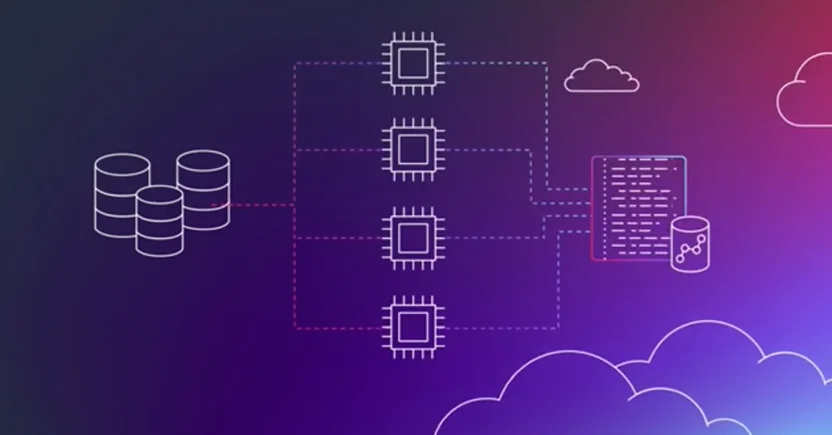
Amazon Redshift is a fully managed, cloud-based data warehouse solution designed for marketers who want to analyze large datasets seamlessly. Redshift’s standout features, including columnar storage and data compression, enable faster query execution, improved compression, and lower storage costs.
Key features: Redshift offers efficient performance, stability, and security. It also supports virtually unlimited concurrent customers and queries with high consistency. Meanwhile, it allows for multi-data warehouse writes in just a few clicks, with granular access controls, enabling better collaboration between teams.
3. Best sales and workflow automation: Outreach

Outreach is a powerful AI-driven platform that helps automate workflows and drive business outcomes at scale. Outreach’s AI tools enable quick data-driven decisions by engaging accounts, forecasting, and enhancing your sales pipeline. Outreach’s AI agents help humans drive revenue workflows to boost sales productivity.
Key features: Custom workflows, account collaborations, and numerous other features make Outreach a go-to martech platform for executing a collaborative marketing technology strategy. This single AI platform is designed to be scalable and secure, featuring AI agents for research, lead management, and follow-ups.
4. Best content automation: Rocketium
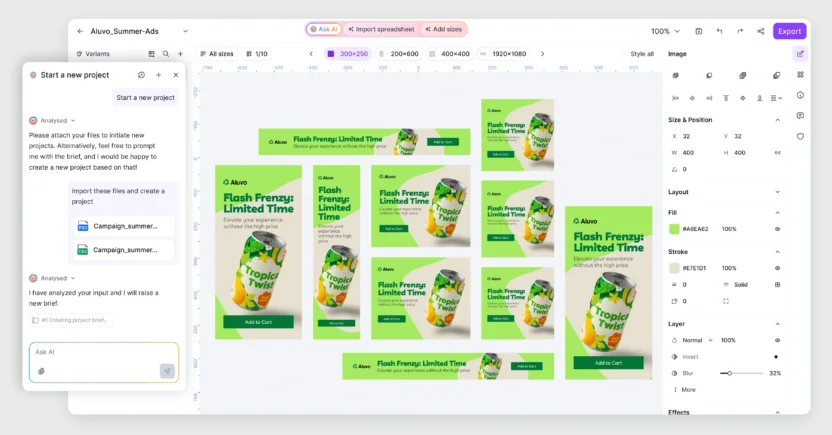
Rocketium is a new-gen AI-driven design software platform that allows brands to quickly create design assets and adapt them for regional nuances, languages, and sizes. Rocketium combines the best of AI, design tools, and agency services and serves as your very own extended creative team.
Key features: Instant creative reinforcements, process audit and optimization, 24/7 agent AI monitoring, AI that adapts to your brand style guide and creative history, brand- and regulation-compliant static and video content.
5. Best for Ecommerce: Shopify
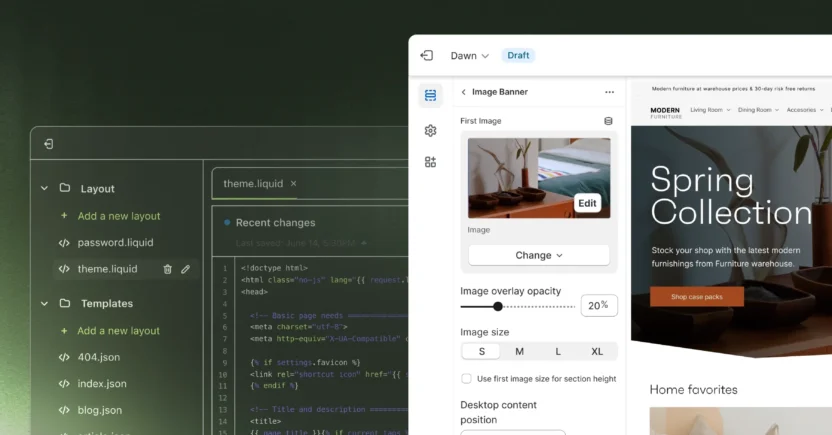
Shopify is a go-to Ecommerce solution for entrepreneurs to enterprises, particularly for B2C brands. Shopify stands out as an all-in-one platform for starting an online store, selling, marketing, and managing your business. With seamless social media integrations and cross-channel reach, this platform offers extensive flexibility to boost your Ecommerce efforts.
Key features: Shopify offers a range of features and tools, including powerful APIs for developers, commerce solutions for digital-first brands, website tools, wholesale and direct global sales enablement, sales tracking and analytics, and inventory and order management.
Building a Future-Proof Martech Stack: Closing Thoughts
Your martech tools provide the fundamental support for your B2C martech strategy. A strong foundation will enhance your brand’s martech capabilities and positively impact your business goals. An end-to-end solution like MoEngage serves as a workflow automation tool, data analytics platform, and message orchestrator, which can simplify your stack, especially if you’re just starting to venture into martech.
Talk to us for a quick demo of MoEngage’s martech solutions and see how it can amplify your martech efforts.



